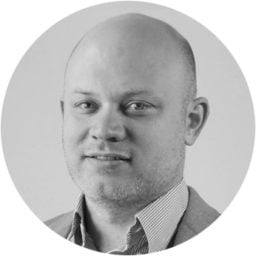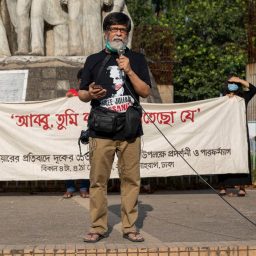Last year, when the Bangladeshi photographer Shahidul Alam was jailed by his government, his case became a cause célèbre, sparking protests, drawing attention to the parlous political situation in Bangladesh, and becoming a symbol of the fight for freedom of speech internationally. But while he is recognized as a powerhouse in photography circles, for more than a few observers (including myself), the uproar was their first exposure to his work.
His relative obscurity in the art world is a scandal, because Alam is someone to be reckoned with. As a photographer and artist, he has been behind important images documenting his country’s history—images that have landed him in trouble in the past. Even before he was jailed last year for more than three months for criticizing the Bangaldeshi government, a show of his photos chronicling extrajudicial executions by the government’s anti-crime Rapid Action Battalion (so-called “crossfire” killings) had been shuttered by authorities in 2010.
But Alam is more than just an artist or activist. He is also an institution-builder. He helped launch a photo agency (Majority World) for photographers from Asia, Latin America, and the Middle East. In Bangladesh, he has built a photo school (Pathshala) and a photo festival (Chobi Mela). Putting Alam’s influence into context, British photographer Martin Parr wrote last year that “given the size of the country, it has more going in photography than almost any other country in Asia, apart from Japan, and this is down to one man: Alam.”
After 102 days in custody and widespread protests within Bangladesh and far beyond it, Alam was finally granted bail last November. At the end of 2018, Time magazine featured him as part of its “Person of the Year” issue, dedicated to persecuted journalists worldwide.
Recently, he was in New York to be honored by the International Center for Photography. While he was here, he sat down with artnet News to talk about where his case stands, his philosophy of art and protest, and what to expect from his first survey, “Truth to Power,” which will open at the Rubin Museum one year after his release.
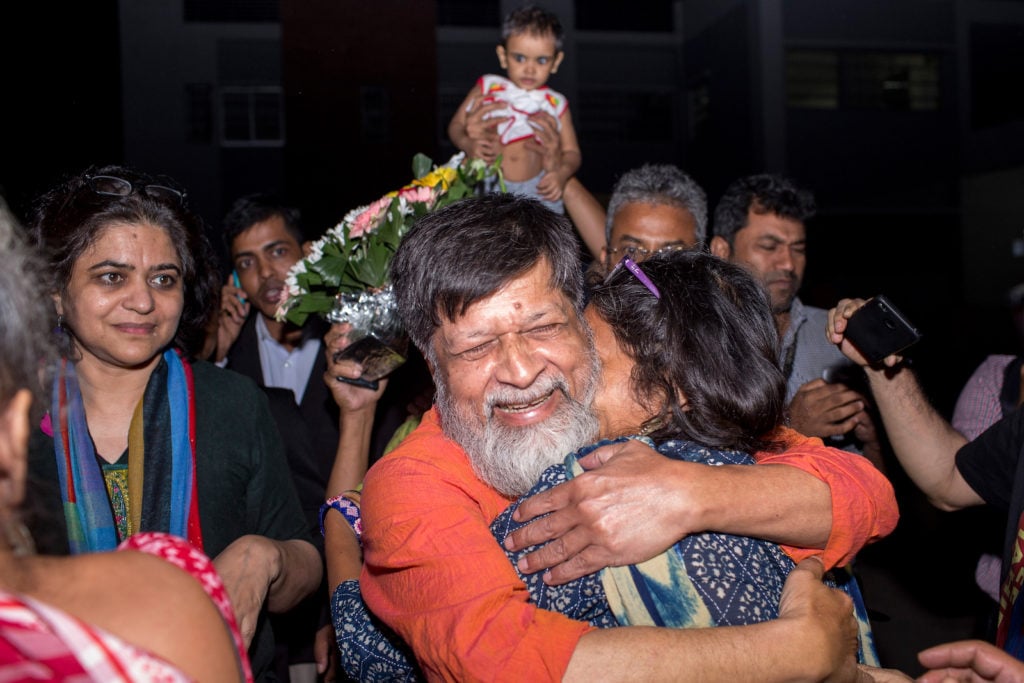
Bangladeshi photographer and activist Shahidul Alam reacts as he is released from Dhaka Central Jail, Keraniganj, near Dhaka, on November 20, 2018, after he was granted bail by the high court a few days prior. Photo by Suman Paul/AFP/Gerry Images.
Where do things stand now with your case in Bangladesh?
The case is ongoing. The charges have not yet been framed. The bail, when it was given, had a very clear ruling which specified that the prosecution had not been able to establish any of the claims that they’d made against me. We then issued a writ against the government challenging the legality of the case itself.
The court ruled that there would be a stay on the investigation for three months. My lawyers have interpreted that to mean that if this stay is actually executed, then that kills the case.
But the government have applied for a stay against the stay. And there was a hearing on that and it was not accepted. But it was not dismissed either. They referred it to a higher bench and the higher bench decides on that on April 11. But ordinarily I expected to be having a hearing on April 15 anyway.
So it’s still ongoing. It’s very much still in play.
Still in play. And eight months after I was arrested on what they claim to be such clear transgressions, they’ve not been able to frame the charges yet.
Your supporters were always very clear that your case was part of a much bigger picture in Bangladesh. Where do things stand with that bigger picture, in your assessment?
Essentially, I think a message was being given. Prior to me being arrested, the chief justice of Bangladesh was effectively sent into exile. Those are very clear signals to people. It’s a way of saying, we can do this to the chief justice—imagine what we can do to you. It’s an environment of fear.
Anyway, I think it’s a police state. And in that situation a statement such as my arrest is meant to tell people to shut up.
It didn’t work in my case: I continued to do what I do. I’ve continued to speak truth to power. That is a right I will exercise. So they now may well come up with different strategies, but that’s their problem.
Right. There was a great deal of international solidarity.
It was phenomenal.
It started, in my observation, most strongly in India and Mexico—in the “Majority World”—but also took off here in the United States and in England—
And there was very good resistance even within Bangladesh, where it’s a lot more dangerous!
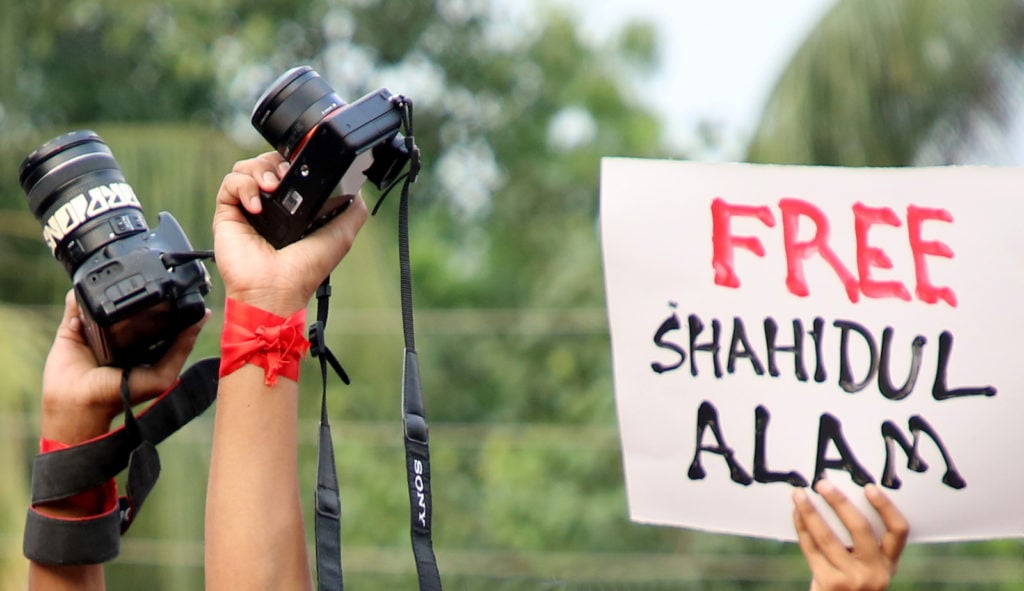
Photographers hold a rally held at Raju memorial monument at Dhaka University in Dhaka, Bangladesh on October 16, 2018, demanding immediate release of Shahidul Alam. Photo by Sony Ramany/NurPhoto via Getty Images.
Actually, let’s talk about the conditions in Bangladesh first, and center things there.
Obviously it is a culture of fear. There is repression. There are people I’ve met in jail who were there because they liked my Facebook post or shared it. So you’ve got a situation where that is a crime.
But by and large, one of my concerns is the fact that while in a country like Bangladesh traditionally artists and students have played a very, very important role in resisting injustice, today a lot of the major cultural players are silent. Many of the people whom you’d expect to be speaking are not speaking.
The fact that there have been “Crossfires,” there have been disappearances, and there is clearly repression are reasons for fear. But these are people you would expect to speak in those situations and they do not.
So the media has been compromised, has been sold out, I think, to a large extent. That makes the few voices that there are that much more vulnerable and conspicuous.
And now that the government has full-spectrum control after having managed this election and all of the sub-elections, there really is very little to resist them. So these are the very few pockets of resistance that are thorns in their sides.

Bangladeshi photographers and social activists take part in a demonstration demanding the release the photographer Shahidul Alam in front of National Museum in Dhaka on November 13, 2018, in Dhaka, Bangladesh. Photo by Mehedi Hasan/NurPhoto via Getty Images.
But people in Bangladesh did come out for you. There were protests.
They came out in very strong terms—taking huge risks. But I think that is also evidence of the overall sentiment there, that even when there is fear, even when this is happening to me, there are people who will come out and protest, because injustice is so great.
And for me what is very moving is the fact that complete strangers stopped me in the streets. They had tears in their eyes, saying, “you said what we all wanted to say but were scared to say. You stood up for us.” And there is that feeling that this is the voice of the unheard.
In terms of the international dimension, my question for you is this: Here in the United States, it is very difficult to get people to believe that what they do here matters in Bangladesh. Did it seem, from the inside, that the international protests had a consequence? Were they important?
They were important to me: You knew that you were not alone; you knew that what you believed in was something that other people supported. And it was important for the people around me, because they didn’t feel as isolated.
Whether it made a difference to the government, we are not sure, because this is not a government that is habituated to listening.
However, I am told that the European Union made a very strong statement where they threatened sanctions. I have no way of substantiating it but I have been told that it was the business community that felt that their interests were in danger and they then rallied around the political groups to say, “Enough is enough. We can’t afford this.”
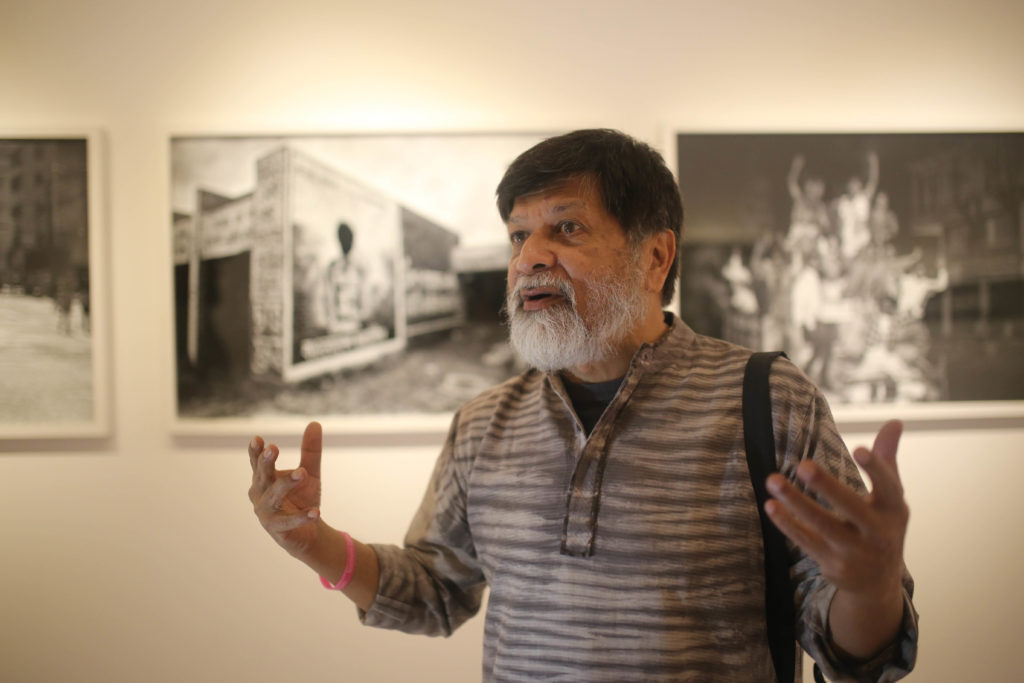
Shahidul Alam posing for a photograph during an interview with AFP in Dhaka shortly after his release from jail. Photo: Rehman Asad/AFP/Getty Images.
In the granting of bail they did mention that your status as an “international figure.”
Oh, that is mentioned throughout, including by the judge himself right from the opening day. He recognized my position, my standing. And he did also say I was lucky I had not been disappeared.
He said that?
In court.
This is not the first time you’ve faced opposition. The “Crossfire” show was shut down, for instance. But has this particular experience changed your perspective on things?
As you mentioned yourself, I’ve been doing this for a long time and my axe to grind is not against the government. It’s against injustice. While governments continue to be unjust, I will act regardless of which government it is.
I had a loaded gun to my head during [the rule of Hussain Muhammad] Ershad. This [he shows his arm] is one of eight knife wounds I got during the BNP [Bangladesh National Party] regime. Now I’ve been put in jail. So they’re pretty even handed in that sense. They all are consistent at least in their behavior. I try to be consistent in mine.
What I think I now need to reflect upon is the fact that when I’m put away in a situation such as this it affects many other people besides me, in terms of the organizations I’ve been involved in, in terms of the wider community. So I think we also need to have plans in place if it should happen again, so that we can continue to resist and the vulnerability of one person doesn’t become the vulnerability of the community.
That is such a characteristic Shahidul Alam way of approaching the problem, in a way. You are such an institution builder.
It is institutions that hold the country together, and our governments successively have destroyed every institution: destroyed the judiciary, destroyed the police, destroyed the education system, and destroyed the bureaucracy. And these are institutions that should play a role independent of which government it is: they are part of the state and not of the government. But now they have become partisan entities which are government tools of repression.
I think the way to counter this is to build credible institutions that are robust, that are credible, that are sustaining, and that will nurture people for generations to come—one hopes.

Honoree and photographer Shahidul Alam speaks onstage during the International Center Of Photography’s 35th Annual Infinity Awards at The Ziegfeld Ballroom on April 2, 2019 in New York City. Photo by Bryan Bedder/Getty Images for International Center of Photography.
Shifting slightly to your work as a photographer: You began as a photojournalist, but you’ve done all kinds of different work.
Actually it’s not true that I began as a photojournalist. I mean, I started as photographer of children. And after that, when I went to Bangladesh, a photojournalist is what I wanted to be but I didn’t have the credentials. I didn’t have the track record.
So I actually started working as a corporate photographer. I did advertising, fashion, industrial photography. That’s the only thing that would pay.
But what I was doing was photojournalism as my personal work. And I continued to do that for many years up to a point where my documentary work began to be known and I began to become recognized in that area.
But the early work that I did, “A Struggle for Democracy,” was entirely my work as an activist, in the streets, documenting my own movement.
That’s an example of letting events determine what kind of work you’re doing. Is that generally how you work?
My interest is social justice. I use photography because it’s a very powerful tool and I will continue to use it as long as it stays powerful, in the pursuit of social justice. I will use whatever tool works best at any particular time.
Photography continues to be the tool where I have a degree of competence, and continues to be powerful. But should tomorrow photography cease to have that power, I will have no problem getting rid of it. I’ll pick up whatever tool is right for the moment.
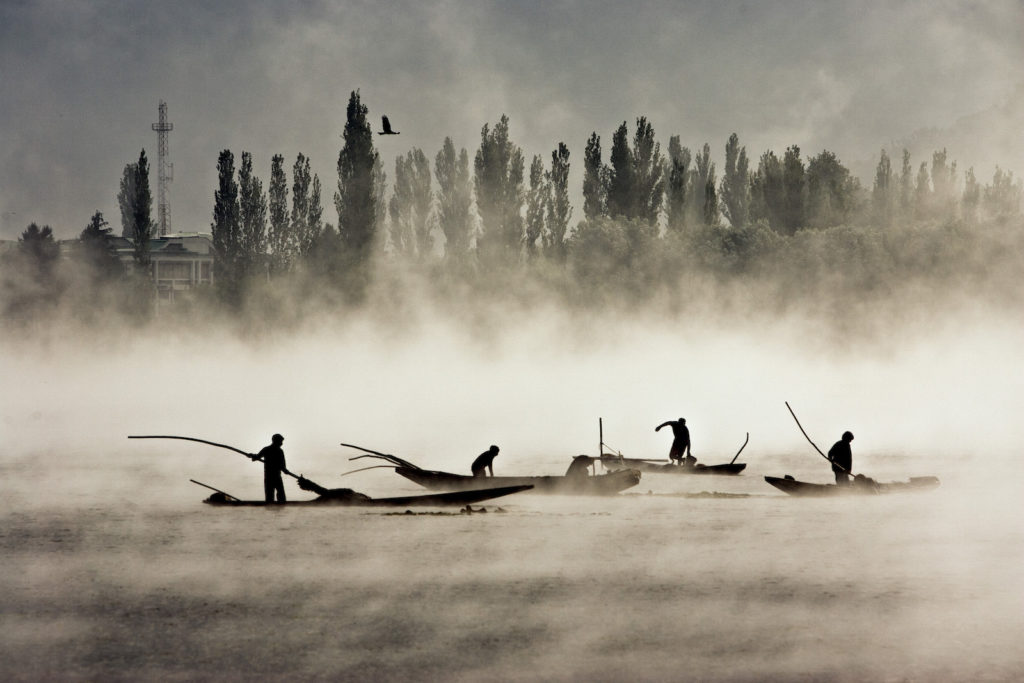
Shahidul Alam, Dal Lake, Kashmir India (2008). Courtesy Shahidul Alam/Drik/Majority World.
You’re someone who has changed photography, in terms of the kind of institutions you’ve built and the kind of voice that you’ve asserted. Have you seen the photography world change over the time that you’ve been working?
Within Bangladesh I think the big difference is not only in the shift in the quality of photography and the respect for photography. You see it at a school like Pathshala where when I began I was the only local teacher and I would arm-twist my friends from all over the world to come and teach. Today, 24 of 26 teachers at the school are former students. That’s organic. That’s very, very strong.
On July 1, I stepped down as principal and the new principal is a student from the first batch of the school. I have now also stepped down as the director of Chobi Mela festival, and in the coming months we will be choosing a new director. Again, possibly one of the former students will take on that role.
Why make that transition in both those cases?
I think there’s a vulnerability in the organization if it is too dependent upon one person. I think it’s also an inbuilt flaw, because one person should not be deciding the course of events.
I mean, I will continue to be active; I will continue to play a role. But I think leadership is something that needs to be nurtured and grow. An alternative leadership is essential to the resilience of an organization.
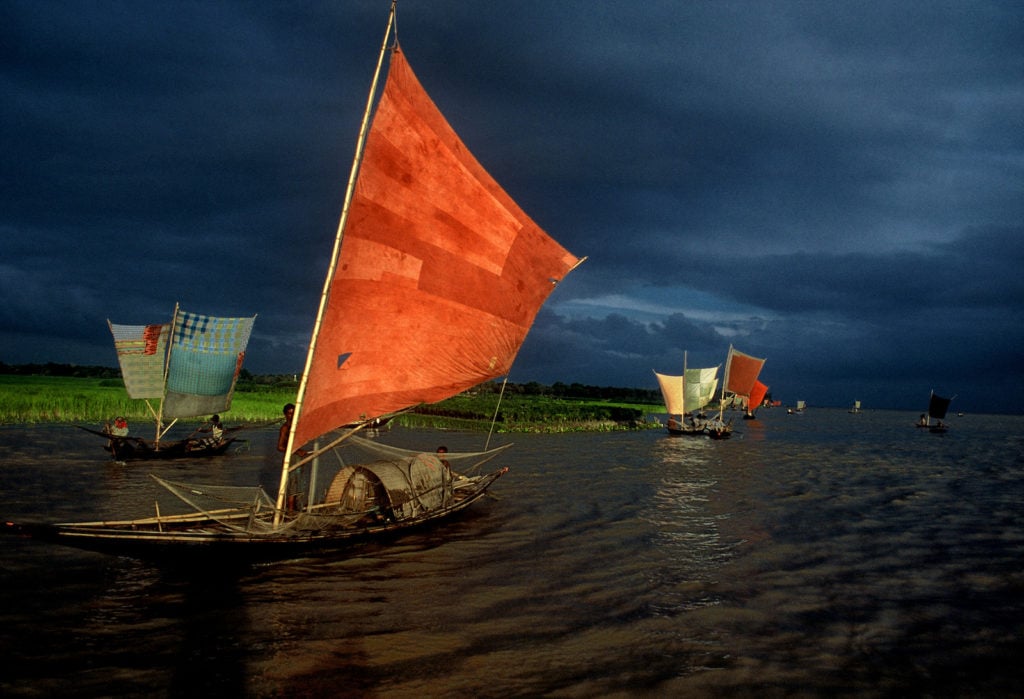
Shahidul Alam, Ilish fishing (2001). Courtesy Shahidul Alam/Drik/Majority World.
As a teacher what are your focuses with students?
To develop critical thinking. I think that’s the primary goal: that you should be constantly questioning yourself, questioning society around you, questioning the system, and constantly reevaluating and changing tack. The status quo is very rarely the right thing to maintain.
And that there be a constant effort to be sharpening both your skills and your thinking—that’s essential.
We look at photography, we look at representation, we look at the wider issues of storytelling. But at the end of the day, it’s whether you as an individual are playing the role that you need to be. The rest of it is picking up the tools you choose, the tools that work.
Transitioning to the upcoming show, how did it come about?
I don’t really know! I was in jail through three layers of bars. Someone held up a thing that said, “Are you interested in an exhibition at the Rubin Museum?”
Really?
Yes! Because you can’t hear. It is such a ruckus in there, 130 decibels, you can hardly hear yourself.
I knew of the Rubin Museum. I was happy. I didn’t at that time know how it transpired. It was only today that I asked the curator at the Rubin how it came about. She had come to Chobi Mela to see the festival, and she did say she knew my work from a long time back and when this thing happened she wanted to know if anyone was planning an exhibition on my work and was told that there wasn’t a plan. So she jumped on it.
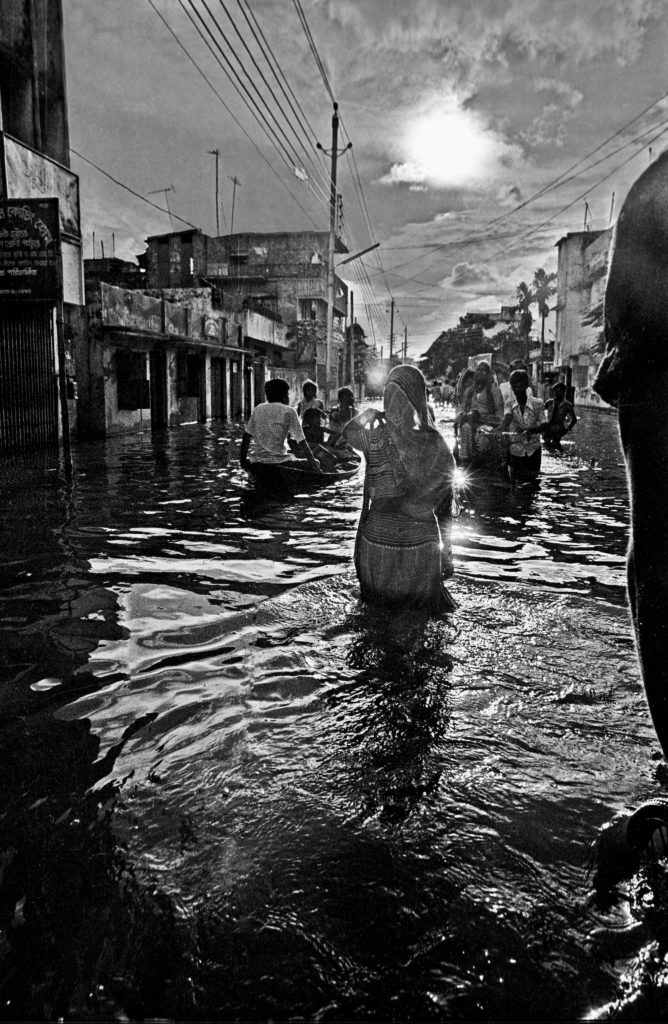
Shahidul Alam, Woman wading in flood, Kamalapur, Dhaka, Bangladesh (1988). Courtesy Shahidul Alam/Drik/Majority World.
You’re working with her on what’s going to be a full survey. What can people expect?
The trajectory of my work over the years beginning with “A Struggle for Democracy,” but also looking at the different ways in which I have tried to tell stories.
So for instance, there’s the “Kalperna Trilogy,” which uses a much more nuanced and abstract conceptual mode of expression. I have ensured that the politics of the story is embedded within the artwork itself.
It will rely also on textual material that I’m doing. It will have segments on the various institutions I’ve been involved with: Pathshala, Chobi Mela, Majority World. It’s about these entities and their relevance and how they work together. But also my trajectory as an individual, as a human rights activist.
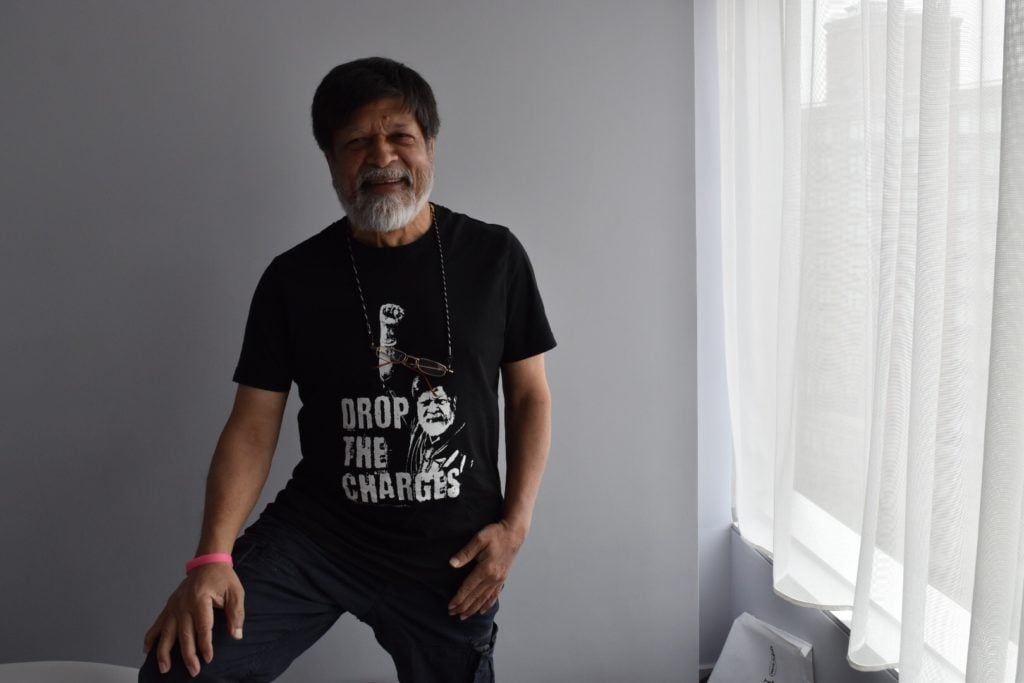
Shahidul Alam during his visit to New York, April 2, 2019. Image courtesy Ben Davis.
So much of your work has been about re-centering the story away from the Western gaze. And here you are doing a show in the belly of the beast. What do you hope that the New York audience takes away from the show?
Well firstly, I have questioned the Western gaze—but that isn’t so much the point of the exercise. This is something that I need to clarify: I do question white Western photographers coming and taking pictures of my country. But not because I think that’s wrong.
In fact, I think my own point of view needs to be questioned. I think my own value system needs to be put under a microscope.
What I do object to is Western photographers having a monopoly on my narrative and that is what I want to change.
I see myself as a global citizen. And I see us living in an interconnected world. Nothing that we do is something that someone else somewhere far away is totally insulated or isolated from.
And it works both ways. I produce work which is critical of injustice in my country but I’m also critical of injustice globally. And therefore I think that engagement needs to be made, but more importantly for me, I think unless we are speaking out to wider communities, this concept of “the other”—the isolation of the other, the fear of the other—is something that will persist.
At the end of the day, if I am in some ways able to tell people that we live in a connected world and that we are fellow human beings, that’s all it takes.











